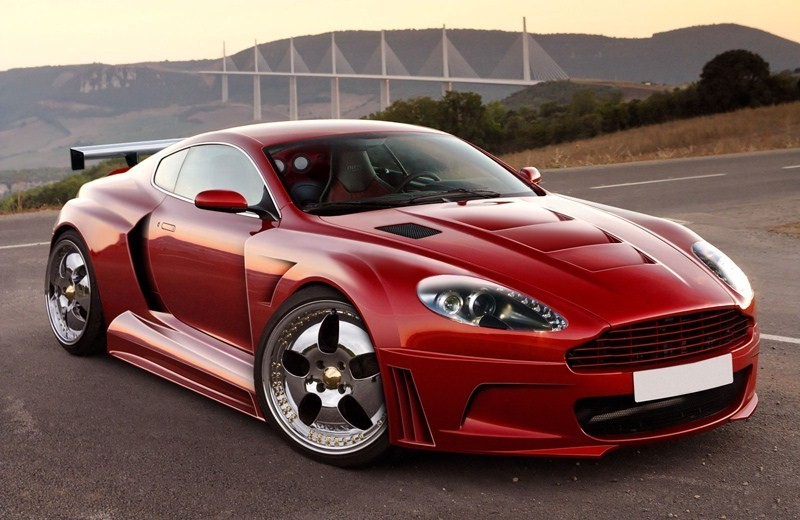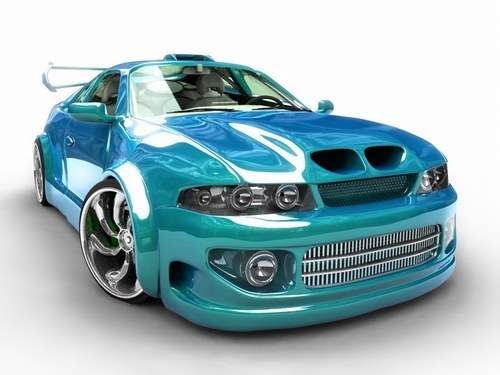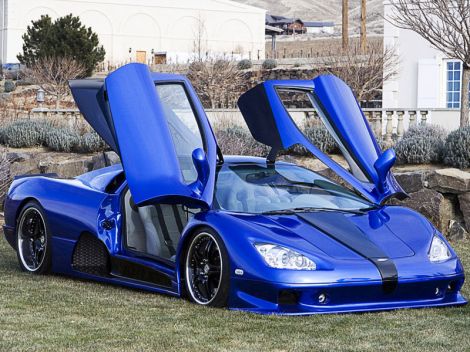|
|
|---|
Monday, December 27, 2010
RPMGO Car Blog |
- Ford Expands Start-Stop Technology
- In Depth – 2011 Porsche 911 Speedster
- PRIOR Mercedes E Class Coupe
- Top 10 Supercars Until 2010
| Ford Expands Start-Stop Technology Posted: 27 Dec 2010 04:35 AM PST Ford is one of the few automakers that are capable of employing a wide variety of engines, from their proprietary EcoBoost units, to hybrids, electrics as well as fuel efficient gas units. In addition to all this, Ford is planning on expanding the use of the start/stop technology to more United States vehicles in 2012. If you did not know, the start/stop technology will shuts off the engine automatically at stop lights in order to avoid wasting precious fuel while idling. The technology is very simple and affordable to implement, especially when compared to complex technologies like hybrid powertrains. Ford is following the trend set by BMW and Fiat as well as other automakers that implement this simple yet very efficient technology into cars, but along with sports automaker Porsche, Ford is taking a leadership role with the start/stop technology in the United States for non-hybrid cars. According to the official press release, the Auto Start-Stop system developed by Ford is capable of improving fuel economy by a considerable 10%. The system was introduced by the company back in 2004 and since then, Ford delivered 170,000 hybrid cars in the United States, cars that feature this technology. The technology not only improves fuel efficiency but also reduces tailpipe emissions to zero while the car is stationary or waiting at a stop light. The auto-stop technology developed by Ford is the latest example of the company's move to bring affordable fuel-saving technologies to all of its customers. Other relevant examples are the electric power steering, the modern dual-clutch PowerShift 6-speed gearboxes and others as well. The Auto Start-Stop technology implemented by the automaker is smooth, seamless and quiet, and it requires no sort of changes to the driver's behavior. For city driving when the car is stopped, the power unit will restart once the driver's foot leaves the brake pedal. While the engine of the car is off, the car's accessories will work entirely just as if the engine was on. According to Barb Samardzich who is the vice president of Ford's Powertrain engineering: "for the driver, Ford Auto Start-Stop provides extra fuel efficiency without inconvenience, as it works completely automatically." This system will be soon implemented in cars that are launched for the European market. The start-stop technology was designed to work both on gasoline and diesel power units and it is standard on the ECOnetic models of the Mondeo and Ka and will be soon available on the C-MAX, Grand C-MAX and the popular Focus. When the system will equip non-hybrid models delivered to the North American market, it will be available on gasoline cars and utilities that have either a manual or automatic gearbox as well as on the cars that feature the proprietary dual-clutch 6-speed automatic transmission. According to Birgit Sorgenfrei who is the program manager for Auto Start-Stop, the system does not require any extra vehicle maintenance. The system works on an enhanced 12-volt automobile battery and an upgraded starter motor. The system includes a light on the car's dashboard which will alert the driver when the engine is off as well as a tachometer that moves the needle to a green area when the power unit is not running. Post published on Rpmgo.com |
| In Depth – 2011 Porsche 911 Speedster Posted: 27 Dec 2010 03:57 AM PST First seen two months ago at the Paris Auto Show, the 2011 Porsche 911 Speedster is a rare, fast and expensive car and will be available at the U.S. dealerships in early 2011 at a starting price of $204,400. This humpbacked 911 is a rear-wheel drive that on paper looks like a 911 GTS Cabriolet but with all the optional features and with a bubbled tonneau cover. If you didn't know, the GTS packs 408 hp from its 3.8-liter 6-cylinder engine. Building on the performances of this car, the Speedster is available with a 7-speed PDK dual clutch transmission, Porsche Ceramic Composite Brakes, Porsche Active Suspension Management and Sport Chrono Plus. According to Porsche, the 911 Speedster will do the 0-60 mph sprint in 4.2 seconds. The acceleration of this car is very efficient and ferocious especially with the launch control as well as when the Sport Plus system is engaged. The wheel spin is electronically limited in order to offer the optimal percentage to the car, guaranteeing fast accelerations. The ZF gearbox of the Speedster receives all of its power from a larger power unit in comparison to a garden-variety 911 – 3.8-liters versus 3.6-liters. The output of this engine is considerably larger when compared to the 911's 345 hp or the 911 S's 385 hp. The Speedster's 408 hp output at 7,300 rpm is very close to a more powerful model, the GT3 which packs 435 hp. When put side by side with the 911 S, the Speedster's more powerful engine guarantees a more robust torque curve as well as extra top-end power thanks to the very complex variable intake manifold. Inside the manifold, six miniaturized furnace dampers channel the air through tuned-length runners in order to optimize the air charge delivery based on the power unit's speed. In order to further enhance the airflow into the cylinder heads, Porsche hand polished the manifold upstream of the heads. To complete the intake tract, the German engineers equipped the 911 Speedster with direct fuel injectors and variable cam timing while at the same time revising the entire engine electronics in order to make the new intake work properly with the balance of the engine's hardware. Compared to the 2011 Porsche GTS, the Speedster's chassis components are exactly the same. However, compared to the S model, the Speedster has a 2 mm front increase and a 32 mm rear track increase due to the additional wheel offset. Speaking of the wheels, the car comes with center-lock rims that measure 19 inches and are equipped with staggered tires that measure 235/35ZR19 for the front wheels and 295/30ZR19 for the rear wheels. The door skins of the 2011 Porsche 911 Speedster are very light and they were taken from the Turbo model. The nose and the front fenders are part of the Sport Design Package which is also used on the 2010 Porsche 911 Sport Classic. From GT2, the Speedster got its functional side skirts and the widebody rear fenders are identical to all of the ones used on the AWD 911s. Compared to the standard 911, the windshield of the Speedster is 2.4-inches shorter. Customers can get the car with the GT's rear spoiler, but it does not add any additional downforce, plus it would ruin the special rear profile of the car. Speaking of the rear profile, the car features an aluminum rear tonneau and similar with the Boxster Spyder, the Porsche Speedster has a Rube Goldberg environmental blocker. The driver of the car must complete 14 steps in order to raise and lower the top, and these steps must be made from the inside of the car and out. Inside the car you will be invaded by the finest leather quality possible. Even the door pulls and the vent surrounds are covered in this fine material. The sill plates denote the fact that this is a limited edition model and each car has individually numbered plaques that match the number on the dash. Porsche will be making only 356 units of the 2011 Speedster and 100 cars will be delivered to United States customers. It is estimated that these cars will only be important to collectors and other enthusiasts and only a few of them will be actually driven regularly. The 2011 model will probably have a life similar with the other generations of the Speedster, like the 1953, 1998 and 1993/1994 models. Post published on Rpmgo.com |
| Posted: 27 Dec 2010 03:20 AM PST A few days ago, PRIOR Design launched their new upgrade tuning kit for the Mercedes E- Class Coupe. This kit offers mostly styling updates and depending on the engine of the car, it can offer also a small yet significant power increase. The front of the latest generation of the E-Class Coupe received a new bumper with side vents as well as a spoiler blade. On the side, the car now features a new set of sills that according to PRIOR's press release, "perfectly connect the car's front and rear have been used to create the impression of a lowered outline." At the back of the car PRIOR installed the following: a rear bumper extension with three fins, a roof edge spoiler and a spoiler lip for the boot. As an optional feature, all of these can be purchased in genuine carbon fiber. For this tuning program for the Mercedes E-Class Coupe, PRIOR Design created new PRIOR GT rims, 8.5 x 20-inch for the front wheels and 9.5 x 20-inch for the wheels in the back. With this occasion, the ride of the car was lowered 35 mm. These wheels are available in silver, gloss black and matt black. As far as the exhaust system is concerned, the customers can choose either a tail pipe located on the left or a complete sports 4-pipe exhaust system available in stainless steel. The system along with the rest of upgrades for the car is made in Germany. All of these upgrades to the Coupe can be fitted to the Convertible version also. For the interior, PRIOR Design offers a bundle of trim parts in carbon. Depending on the engine version, the tuning company offers increased performance options of up to 75 hp / 55 kW. If you want to get the entire body kit, consisting of front bumper with blade, rear bumper extensions with fins and side sill, you will have to pay 1,899 Euros. The price for the boot spoiler lip is 249 Euros while the roof spoiler will set you back 229 Euros. The Prior GT 20-inch rims along with branded tires will cost you 2,490 Euros. Lowering the height of the car can be done with 249 Euros. Post published on Rpmgo.com |
| Posted: 27 Dec 2010 02:56 AM PST Finding out the fastest 10 supercars until this year was not actually a hard thing to do because there weren't that many cars launched that could fit in this top. In the following you will see some cars that are more than 10 years old that are still eligible for the "supercar" title. Bugatti Veyron 16.4 Super Sport – easily the most expensive car you will find in this list with an incredible price tag of $2.4 million. The first version of the Veyron was launched back in 2005 and it became the fastest production car in the world. In 2010, Bugatti Automobiles, owned by the Volkswagen Group, came back with another iteration of their model, the Super Sport. This new yet still the same model is capable of producing 1200 hp (in comparison to 1001 hp) from the massive W16 8.0-liter power unit. The car is capable of doing the 0-60 mph in just 2.2 seconds, onto a top speed of 267 mph. SSC Ultimate Aero – produced in a limited quantity of only 24 cars between 2006 and 2007, the Aero was recognized by Guinness Book as the fastest car in the world in March 2007. Although things have changed since then, the Aero is still an incredible car with its twin-turbo engine that is capable of outputting 1183 hp. The car will do the 0-60 mph sprint in 2.7 seconds and has a top speed of 257 mph. The price for the car was $485.000. The company is at the moment working on a car that will dethrone the Veyron. Koenigsegg CCX – the car made its first appearance on February 28, 2006 at the Geneva Motor Show and shocked the world with its powerful 90 degree V8 power unit that develops 806 hp. This Swedish supercar only needs 3.2 seconds to reach 60 mph from start and has a remarkable top speed of over 250 mph. The price for the standard model is $1.82 million while the top of the line model will set you back $2.050 mil. Saleen S7 Twin-Turbo – made in United States, the S7 is equipped with a 100% aluminum V8 engine that packs no more than 750 hp. This twin-turbocharged piece of engineering went on sale in 2005 and had a price tag of $585.296, replacing the standard non-turbo S7 car. It is capable of doing the 0-60 mph sprint in 3.2 seconds, onto a top speed of 248 mph. The American supercar maker is offering an optional competition package which will further increase the power of the car by 33%. McLaren F1 – one of the oldest cars from the top, the McLaren was launched in the early 90s and it broke all current records. The car was powered by a massive V12 engine that was capable of outputting more than 600 hp which was remarkable at that time. The car will do the 0-60 mph sprint in 3.2 seconds and has a top speed of 240 mph. The car became popular right after the launch thanks to its proprietary doors that look like bat wings. It was produced until 1998 at a price tag of about $970,000. Today, if you want to get your hands on this car you will have to pay almost double that price. Gumpert Apollo – you might have never heard about this car but it is definitely worth a place in our top. Made in Altenburg, Germany, the Apollo is a supercar that needs 2.7 seconds to reach 60 mph and has a top speed of 220 mph. The mid-engined RWD 2-seater is made on a tubular chromoly frame, with fiberglass as standard or for extra money, with carbon fiber body panels that reduce the weight of the car. The car is available with three engine choices, the race version outputs 789 hp. The Apollo went into production in October 2005 at a hefty starting price of $400.000. Ascari A10 – designed for racing A10, it is very well capable for normal roads. 2.8 seconds are required for the 0-60 mph sprint, onto a top speed of 220 mph. The heart of this car is a modified BMW V8 5.0-liter engine that packs 625 hp. The car was manufactured in Banbury, England and had a price tag of about $650.000. It was a limited edition car as only 50 units were ever produced. Ferrari Enzo – no top is relevant without a Ferrari. In this top we have included the spectacular Enzo with its F140 V12 engine that is capable of producing 660 hp. At the moment it is one of the most powerful naturally aspirated automobiles in the world, with a top speed of 217 mph. The Enzo will do the 0-60 mph sprint in 3.2 seconds. Only 399 cars were ever produced and they sell at auctions for about $1 million. Pagani Zonda F – an upgrade from the Zonda S, the "F" has a top speed of 215 mph and will do the 0-60 mph sprint in 3.5 seconds. The heart of this engine is a very powerful V12 engine, developed by Mercedes-Benz, packing 650 hp. The starting price for the Zonda F is $694,000. Jaguar XJ 220 – the oldest car from our top, launched back in 1992. With a top speed of 217 mph and only 4 seconds to reach 60 mph, it still is a remarkable car after almost 20 years. The car features a V6 engine that outputs 542 hp and only 281 units were ever made, the last one rolled out of Jaguar's factory in 1997. The remaining cars sell new for about 150,000 pounds. There are other cars that didn't made our top but the above 10 will definitely remain in the supercar history as all have huge engines, great looks and incredible price tags, making them the most exclusive cars in the world not only because of their price, but also because of their limited production. Post published on Rpmgo.com |
| You are subscribed to email updates from Rpmgo.com To stop receiving these emails, you may unsubscribe now. | Email delivery powered by Google |
| Google Inc., 20 West Kinzie, Chicago IL USA 60610 | |






























